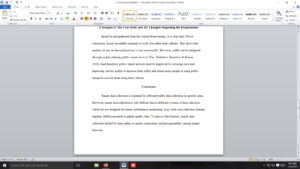US-Kenya Trade Deal
Research paper
For this assignment, respond to one of the following options:
Option 1: Find a recent article (less than one month old) from a reputable news source concerning a Free and Fair Trade issue between at least two countries.
- Summarize the article.
- What is the issue?
- Explain why this issue is important to the global community.
- Evaluate the source.
- What is your opinion?
Option 2: Find a recent article (less than one month old) from a reputable news source concerning a proposed budgetary change.
- Summarize the article.
- What is the issue?
- Explain who is affected most from the change?
- Evaluate the source.
- What is your opinion?
Writing Requirements (APA format). Refer to the APA manual.
- Length: 3 full pages (not including the title or references page)
- 1-inch margins
- Double-Spaced
- 12-point Times New Roman font
- Title and Reference page required
- APA cite article with link
- Scan copy of article required
Answer preview
The trade negotiations between Kenya and the US appertain to finding the correct balance between free trade and fair-trade practices. The United States is a superpower whose advanced industrialization gives it a competitive edge on multiple commerce fronts. On the other hand, Kenya is a middle-income country that is mostly dependent on the export of its agricultural products. Therefore, the two parties need to find a compromise in the United States’ quest to create a free market for its goods while protecting Kenya’s relatively young domestic market. The bilateral negotiations also have an academic significance as they are a real-life embodiment of the never-ending debate pitting proponents of fair trade against supporters of free trade.
[1030 Words]

US-Kenya Trade Deal







